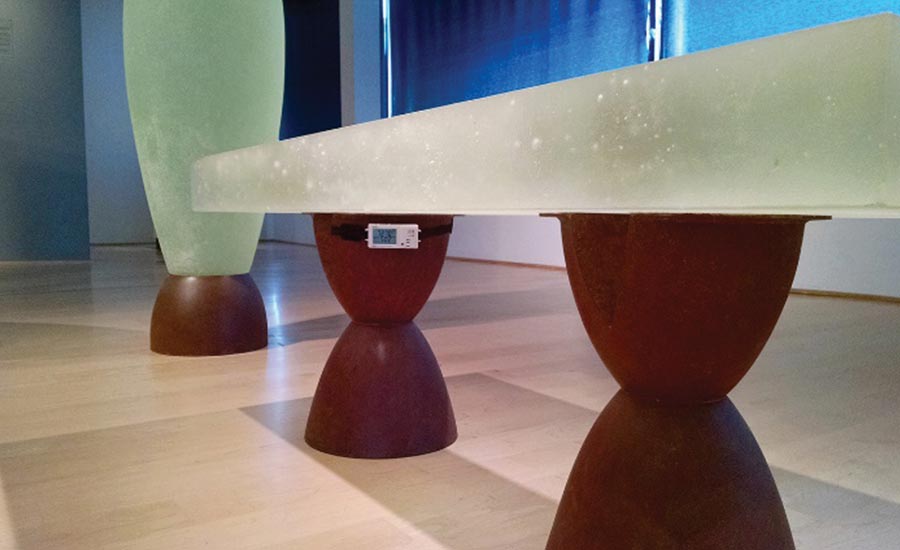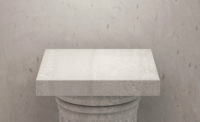The Hunter Museum of American Art in Chattanooga, TN is a 77,000-sq-ft facility perched on an 80-ft bluff overlooking the beautiful Tennessee River. Established in 1952, the museum features an extensive collection of American art from the Colonial period to the present. The museum complex comprises three unique yet interconnected structures built in 1905, 1973, and 2005, representing 100 years of architecture.
Like most museums, the Hunter Museum’s purpose is to make important works of art available to the public — and to preserve those items for future generations. To preserve its assets, the museum needs to maintain a stable interior climate and prevent unfavorable environmental conditions that can harm objects and cause deterioration. Temperature and relative humidity, in particular, must be closely controlled and kept at suitable levels (temperature of 68°F to 72°F, and rh of 50% with +/- 5% fluctuation). These parameters are significant because warmer temperatures can cause heat damage to certain objects, and high rh levels can bring about mold formation and cause objects to corrode, warp, and crack.
Environmental control is a particular challenge at the Hunter Museum as it houses objects made from a variety of different materials. Another key challenge is balancing optimal conditions for preservation and occupant comfort. Chattanooga’s summer heat and humidity require the Hunter Museum’s managers to be extra vigilant about climate control in their three buildings.
To achieve greater environmental control, registrars Elizabeth Le and Theresa Slowikowski, who are responsible for implementing procedures relating to the care of the facility’s permanent collection, rely on an internal climate-control computer system. This system also documents and stores all historical data, such as temperature and humidity readings. However, when the museum recently requested an exhibition from a major museum, the registrars realized they had a problem. The lender required three years of climate-control readings before agreeing to loan out its exhibition. The registrars found that although the climate-control portion of Hunter Museum’s system was working perfectly, the data-recording portion was malfunctioning and data was only being saved for two weeks.
The company that installed the environmental system informed them that the data-recording portion of the system could not be repaired.
"To correct the problem, we were faced with purchasing a whole new system that we could not afford," said Le. "What’s more, a new system was not necessary since the climate-control portion was functioning perfectly. At the time, the building maintenance staff had no choice but to manually record temp and rh data every two weeks to begin building up years of data history."
With manual data collection being very time-consuming and retrieval difficult due to numerous individual records, Slowikowski and Le looked for a more optimal solution. They were familiar with HOBOs since they had successfully used older models in the past. Ultimately, they chose to purchase and install Onset HOBO® MX1101 data loggers in the galleries. The loggers, which leverage Bluetooth low energy (BLE) technology, continuously measure and record temperature and rh around the clock, and enable the registrars to download the readings wirelessly from up to 100 ft away with just a smartphone or tablet.
The BLE loggers provide the Hunter Museum with a number of advantages. First, they eliminate the time and costs associated with manual data collection, and collect data when and where it is needed. And, they provide audible and visual alarms to notify staff of potential problems so corrective actions can be taken immediately.
"We have to keep every data record and monitor any extreme changes,” said Slowikowski. "If there's a paper buckle or a ripple, we can narrow down the cause with the assistance of the HOBO.”
When one of the museum’s glass sculptures began to develop a small crack, she explained, one of the loggers was strapped directly onto its pedestal. The registrars used data from the logger to prove that current environmental conditions for the sculpture were in standard ranges, and the crack was most likely caused by an inherent flaw. The museum was able to document the analysis and provide detailed measurement readings to use in considering the cause and repair of the crack.
Second, the devices can be deployed in hard-to-access locations if necessary, including storage areas and inside display cases, and make access to the data very straightforward and convenient using mobile devices.
“We have three different buildings on the property, all interconnected, and each with its own climate-control needs,” said Le. “With the mobile app I can retrieve the data I need instantly from each HOBO location using my iPad."
Finally, the loggers provide evidence of the environmental data submitted in the facility report, a document adopted by the American Alliance of Museums when applying for and receiving exhibits and loans.
"Now with the HOBOs in place, we have both historical data and real-time data at our fingertips," said Le. "We are hosting a Monet exhibit at the museum this June, and the lenders know it will be in good hands."
When a glass table on display at the Hunter Museum of American Art began to crack, staff used data loggers to demonstrate that room conditions were not the culprit.




